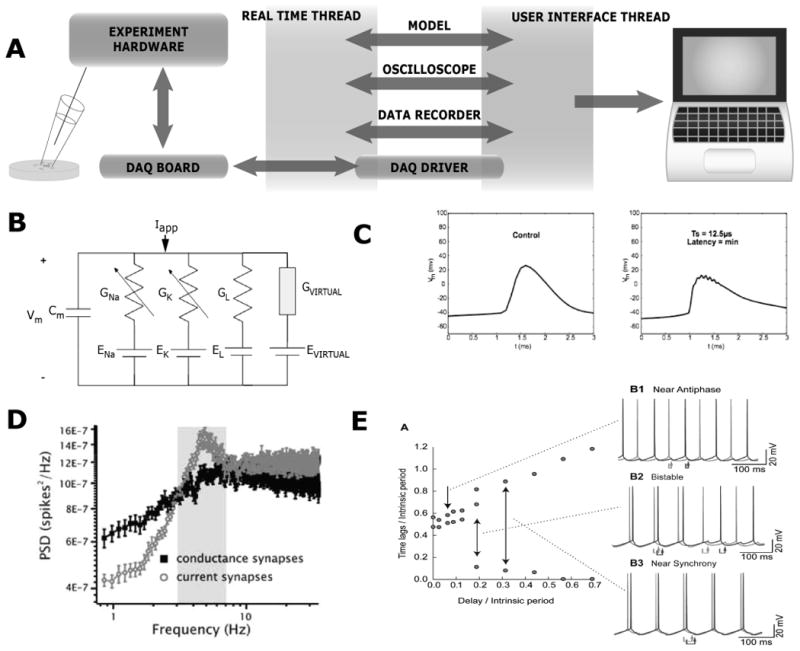Fig. 2.

A.) General setup for RTXI [42], an open-source system for dynamic clamp and other control-based experimental protocols. Arrows indicate transfer of information. The real-time thread is uninterruptable to ensure real-time performance. B.) Dynamic clamp is often used to introduce a virtual conductance source into a cell membrane at the location of the electrode. This conductance is injected as a current and may be modeled as a series conductance and reversal potential, connected in parallel with existing biological membrane conductances at the site of the electrode. C.) Left panel: A neuronal action potential, recorded intracellularly under control conditions. Right Panel: With time steps of 12.5 μs, RTXI is fast enough to replicate, with reasonable accuracy, the actions of previously blocked, fast-inactivating Na+ channels in generating action potentials [66]. D.) Power spectral densities of spike trains show that 3-8 Hz interspike intervals are eliminated with the use of conductance-based synaptic activity delivered with dynamic clamp, but preserved with current-based inputs [58]. E.) A hybrid model/neuron circuit moves between antiphase (y-axis value near 0.5) and synchrony (y-axis value near 0 and 1) with changing conduction delay between two neurons that have been connected via virtual synapses (dark and light gray traces in the right panels) [63].
